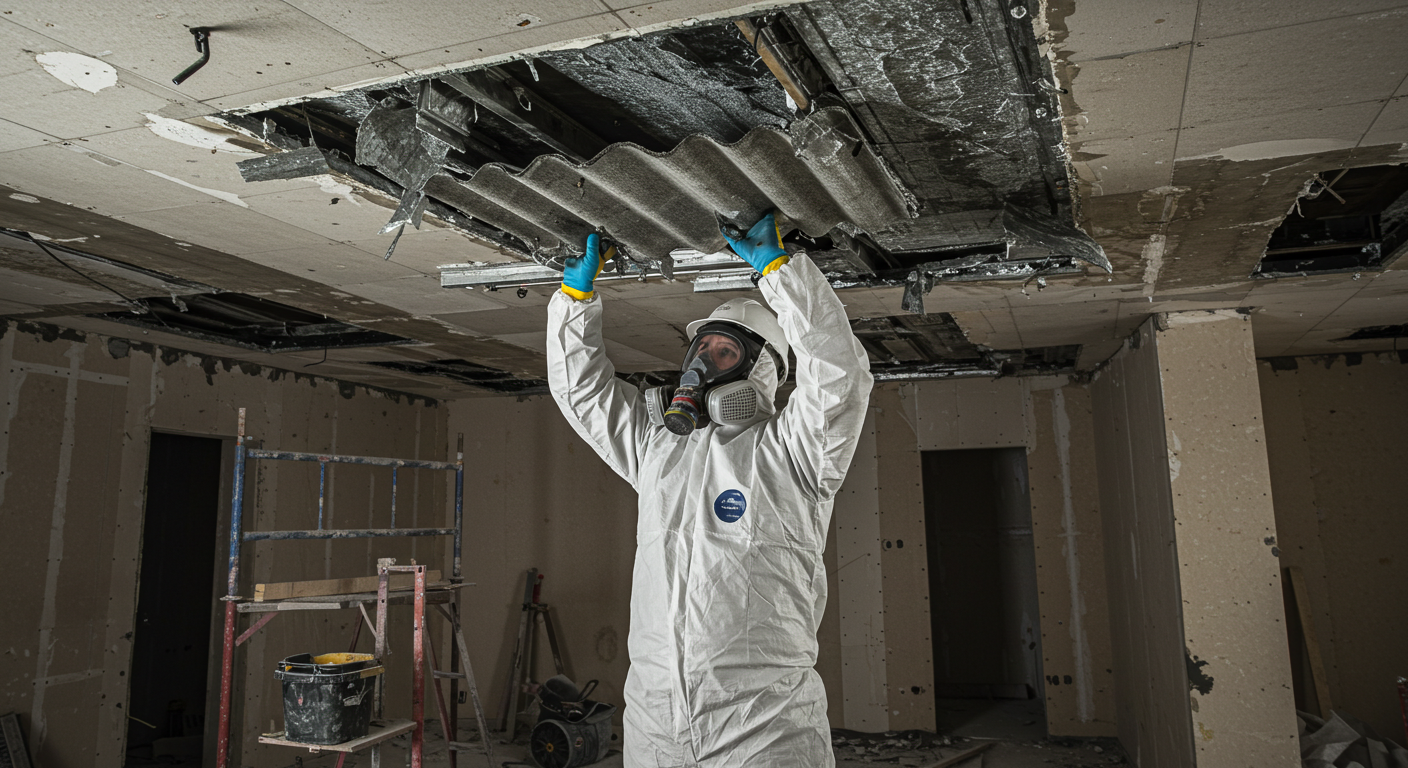Property owners, employers and building managers have a significant responsibility to manage asbestos in buildings, especially in older constructions. Once a common material in construction, asbestos poses severe health risks if its fibres become airborne and are inhaled. Understanding the duty to manage asbestos and adhering to UK regulations is crucial for ensuring safety and legal compliance.
Understanding the Duty to Manage Asbestos
The duty to manage asbestos is a legal obligation under Regulation 4 of the Control of Asbestos Regulations 2012 in the UK. This duty applies to owners, employers and those in control of non-domestic premises. It ensures the risks posed by asbestos-containing materials (ACMs) are appropriately assessed, monitored and managed to prevent exposure.
The duty requires explicitly:
- Identifying and evaluating the presence of Asbestos-Containing Materials (ACMs) in buildings.
- Recording the location and condition of these materials in an asbestos register.
- Monitoring ACMs regularly to ensure they remain in good condition.
- Creating and executing a comprehensive asbestos management plan to mitigate exposure risks.
- Informing anyone who may work on or disturb the materials about their presence and associated risks.
The Risks of Asbestos Exposure
From the early 1950s until the 1990s, asbestos was widely utilised in construction materials because of its strength, heat resistance and insulating capabilities. Common applications included pipe insulation, ceiling tiles, roofing sheets and cement products. However, when asbestos-containing materials are disturbed, tiny fibres can be released into the air.
Inhaling asbestos fibres is dangerous and can lead to life-threatening diseases such as:
- Mesothelioma: Aggressive type of cancer that impacts the lining of the lungs or abdomen.
- Asbestosis: A long-lasting lung condition resulting from extended exposure to asbestos fibres.
- Lung Cancer: Often linked to asbestos exposure, especially in individuals who smoke.
- Pleural Thickening: A condition characterised by scarring of the lung lining, leading to difficulties in breathing.
These diseases can take decades to manifest, meaning individuals exposed to asbestos today may not experience symptoms until many years later. This highlights the importance of preventing exposure at every level.
Identifying Asbestos in Buildings
One of the first steps in managing asbestos is identifying its presence in buildings. Asbestos can often be found in various building components, such as:
- Ceiling and floor tiles.
- Pipe insulation and lagging.
- Roofing materials, such as corrugated sheets.
- Textured coatings like Artex.
- Boilers, flues and heating systems.
Conducting an asbestos survey is essential for identifying and assessing the risks posed by ACMs. There are two main types of surveys:
- Management Survey: Identifies ACMs that may be disturbed during expected occupancy or routine maintenance.
- Refurbishment and Demolition Survey: Required before any construction work that could disturb asbestos.
UK Regulations and Legal Obligations
The Control of Asbestos Regulations 2012 provides a legal framework for managing asbestos in the UK. Unable to comply with these regulations can lead to substantial fines, imprisonment, or both. Beyond the legal implications, neglecting asbestos management puts lives at serious risk. Key aspects include:
- Risk Assessments: Duty holders must assess the likelihood of ACMs being present and the risks they pose.
- Asbestos Register: A record of identified ACMs, including their location and condition, must be maintained and updated.
- Management Plans: A documented plan outlining how risks will be managed and communicated is required.
- Information Sharing: Those who may come into contact with ACMs, such as contractors or workers, must be informed about their presence and the precautions to take.
Creating an Asbestos Management Plan
An asbestos management plan (AMP) is a cornerstone of effective asbestos risk management. This document outlines how ACMs will be handled to minimise the risk of exposure. Key elements include:
- Identification and Location: Clearly document where ACMs are located in the building.
- Risk Assessment: Evaluate the condition of ACMs and their likelihood of being disturbed.
- Monitoring Schedule: Establish a plan for regular inspections and assessments.
- Action Plan: Detail procedures for managing ACMs, including labelling, sealing, or removing them.
- Communication Protocols: Ensure all relevant individuals, including staff and contractors, are aware of the risks and precautions.
Practical Steps for Managing Asbestos
Once an asbestos management plan is in place, practical measures are required to minimise risks. These include:
- Labelling: Clearly marking ACMs to warn workers and visitors.
- Restricting Access: Limiting entry to areas where ACMs are present.
- Safe Work Practices: Implementing controls to prevent disturbance of ACMs during maintenance or repairs.
Removal may be necessary in high-risk situations, such as when ACMs are damaged or deteriorating. To ensure safe handling and disposal, this should only be performed by licensed asbestos contractors.
Asbestos Awareness and Resources
Awareness programmes are a key component of effective asbestos management. Training workers and building managers help them recognise ACMs, understand the associated risks and follow safe practices.
If you’re looking for resources on asbestos awareness e-learning programmes are a flexible option for learning at your own pace. You can find several reputable UK-based training providers who can provide practical knowledge and understand your legal obligations. Topics covered typically include:
- Understanding legal responsibilities and safe practices.
- Recognising ACMs in buildings.
- Responding to potential exposure incidents.
The Role of Professional Support
Managing asbestos is a complex task that often requires expert assistance. Accredited surveyors and consultants play a critical role in identifying ACMs, assessing risks and recommending appropriate actions. When removal is necessary, licensed contractors ensure the process is carried out safely and in compliance with UK regulations.
Choosing the right professionals involves verifying their qualifications, experience and adherence to HSE guidelines. Working with trusted experts minimises risks and provides peace of mind.
Challenges in Managing Asbestos in Older Buildings
Tackling these challenges necessitates a proactive strategy that involves thorough surveys, effective communication and placing health and safety above convenience. Older buildings often present unique challenges, including:
- Hidden ACMs: Asbestos may be concealed in hard-to-reach areas, requiring thorough surveys.
- Incomplete Records: Buildings constructed decades ago may lack documentation of past asbestos use.
- Resistance to Change: Building owners or tenants may resist implementing management plans due to cost or disruption concerns.
Conclusion:
The responsibility to manage asbestos is a legal and ethical duty that safeguards lives. By understanding the risks, complying with UK regulations and implementing effective management plans, property owners and managers can ensure the safety of their buildings.
Whether it’s identifying ACMs, educating workers, or hiring professionals for specialised tasks, every step contributes to reducing the risk of asbestos exposure. Taking action today not only safeguards health but also ensures compliance with the law, creating safer environments for all.











